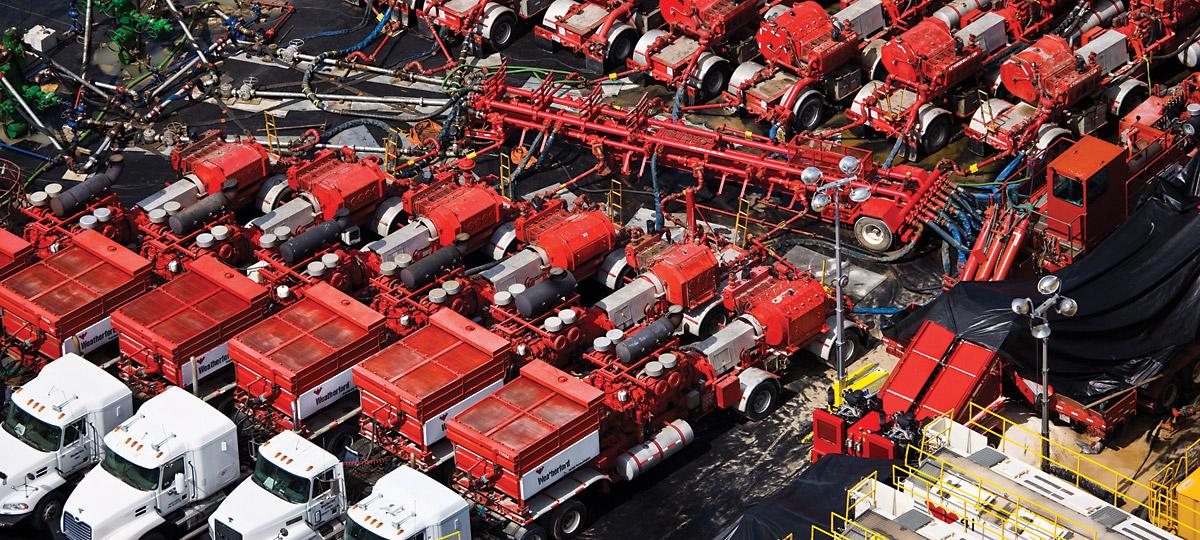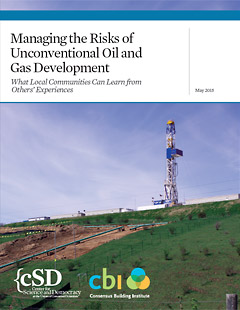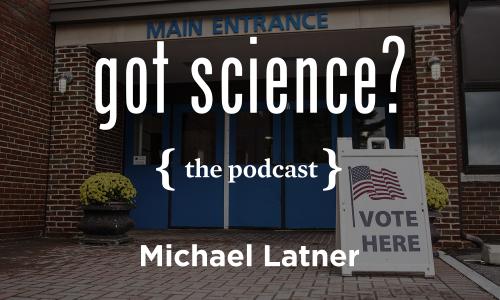Unconventional oil and gas production methods such as fracking (hydraulic fracturing) have expanded rapidly in recent decades, accelerating production both from areas historically rich in oil and gas and from completely new regions.
This expansion has created challenges for local governments as they respond to overtures from oil and gas developers. Because the growth of fracking has outpaced full scientific understanding of its impacts, local officials must respond in a context of uncertainty about the facts and fragmented public opinion.
And because local authority to regulate fracking is subject to legal limits that vary from state to state, municipal and county officials need to make use of all the tools at their disposal—regulatory, non-regulatory, and fiscal. Our 2015 report, Managing the Risks of Unconventional Oil and Gas Development, based on interviews with local public officials, highlights regulatory, non-regulatory, and fiscal tools local officials and decision makers can use to manage the impacts and risks associated with oil and gas development.

Fracking costs and benefits
Local officials considering their approaches to fracking development must weigh a variety of risks, costs, and benefits to their community.
On the plus side, fracking can stimulate local economic growth, creating jobs and generating new wealth for mineral rights owners and local businesses. Some property values may rise, and local governments may find that fracking operations bring new revenues.
These benefits, however, are accompanied by new costs and risks to the community, including stress on the water supply, air, noise and light pollution, chemical exposure, and earthquake risks. Population growth can bring new socioeconomic problems, property values may fall for residents near fracking sites, and revenue increases may be offset by increased costs for infrastructure maintenance and public services.
The context and challenges for local governments
Oil and gas development is primarily regulated by state governments, which decide how much regulatory discretion to allow at the local level. Thus there is considerable variation from state to state in what local governments can do about fracking. Differences in culture, values, history, and economic conditions can also shape widely differing community responses to fracking operations.
Because companies often work quickly and confidentially to secure leases for oil and gas development, local officials may not learn that fracking is occurring in their jurisdiction until operations are already underway—and then they must scramble to get up to speed on a new, highly technical industry. The lack of widely trusted information about fracking and its impacts means that public discussion in many communities becomes dominated by conflict, adding to the challenges that local officials face.
How local governments have responded
Local governments have used a variety of tools to manage the impacts of oil and gas development:
Regulatory approaches. Although the ability of local jurisdictions to regulate varies widely depending on the state, officials may be able to use local regulations around a variety of issues, including land use, water protection, public health and safety, and road and traffic impacts.
Non-regulatory approaches can address residents’ concerns and yield desired outcomes for communities when state regulation preempts local action. Such approaches include community and industry engagement, incentives, contractual mechanisms, and data collection.
Fiscal strategies and tools can be used to manage or offset the costs and financial risks arising from oil and gas activity. As with regulatory tools, not all of these options are available in all states, but they can range from taxes and fees to in-kind contributions and road maintenance agreements.
Best practices emerging
Based on the experiences of local officials from across the country, the report suggests some best practices for responding to unconventional and gas development:
Maintain open communication and transparency. As the first point of contact for many residents regarding concerns about risks and impacts of unconventional oil and gas, local governments can serve as an honest broker to help members of their community understand how oil and gas development works and to host a balanced discussion of the benefits, costs, and risks.
Match a jurisdiction's resources with the scale and pace of development. Unconventional oil and gas development can move fast, and local governments may have trouble keeping pace in their responses. They can help avoid this problem by adding staff, forming partnerships with universities or other local resources, or implementing a moratorium to allow time for collecting data.
Plan for the phases of development. Oil and gas development occurs in three phases, which have different effects and timescales—and these phases occur differently in fracking operations than in conventional development. Local governments need to work with operators to understand these phases and manage their impacts.
Account for the differences between rural and urban contexts. Incentives, impacts, and demands on government services resulting from fracking operations can differ widely between rural and urban settings.
Pay attention to issues that might not be top-of-mind for constituents. While concerns such as air and water quality are likely to get plenty of public and media attention, local officials also need to prepare for other impacts such as traffic, infrastructure strains, housing pressures, and increased demand for government services.
Create diverse revenue and energy streams to plan for the future. Minerals development can be a large revenue source for local governments, but they can also be volatile. Governments should plan and budget accordingly, and be prepared for the day when oil and gas prices decline or supplies are depleted and developers move on.




